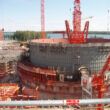A carbon tax may look better when considering the current economic climate
By Janet E. Milne, October 7, 2008
We seem to have fairly broad agreement that carbon taxes and cap-and-trade programs share similarities, and as David Weisbach and Ken Richards suggest, each is worth its salt only if it’s well designed. And I assume we agree that price matters. Just through the market-driven increases in gas prices, Americans traveled 12.2 billion fewer vehicle miles in June than 12 months earlier, a 4.7 percent drop. As others have stated, a fundamental difference between carbon taxes and tradable allowances revolves around certainty of price versus certainty of quantity. So we largely agree on a number of points.
But the two approaches are also fundamentally different in the characters involved–a difference that’s important as we evaluate the pros and cons. The carbon-tax mechanism involves two parties–the entities charged with paying the tax based on the carbon content of its fossil fuel holdings and the IRS. The taxpayers may pass the cost of the tax on down the chain of purchasers, and the behavioral effect of the tax will depend on how the price signals influence decisions by the taxpayers and subsequent purchasers, but the mechanism itself is implemented directly just between taxpayers and the IRS.
The cap-and-trade approach incorporates the notion that allowances (whether allocated for free or by auction) will circulate in the economy until they settle out in the hands of those who can use them more efficiently. This involves multi-party relationships in the direct implementation.
The bill debated in the Senate in June requires the EPA to allocate the allowances, in part through quarterly public auctions and in part through distribution at no cost to manufacturers, states, and other entities, and all the allowances can then be traded with anyone who is interested. It’s an open, economy-wide trading system for a new commodity created by government. The circle of direct participants isn’t limited to the covered industries; it involves traders and the general public; and in the end the costs (as with a tax) may be passed along to consumers.
The proposal also involves the creation of new entities such as a presidentially appointed Carbon Market Efficiency Board to monitor the market and approve “off-ramps” that can offer cost relief, an International Climate Change Commission to deal with allowances for imports, and a government Working Group to recommend protections against fraud and market manipulation.
Ken has suggested that political and institutional considerations tilt the balance toward cap-and-trade, but the picture may have changed since we started this discussion, given these differences in the players. At the risk of drawing premature conclusions from the economic crisis and congressional bailout negotiations, I wonder whether Congress and the public will have as much appetite as before for creating a new market commodity by government fiat.
Whether awarded for free or through auction, an economy-wide cap-and-trade program for greenhouse gases would create a new market estimated at more than $100 billion in 2012. Carbon-backed allowances are different from mortgage-backed securities in most respects, and they bear different risks to society. But it may be politically more difficult now to argue on Capitol Hill that we should trust a trading market or proceed without a careful regime of regulation designed upfront to govern the new trading market, particularly when we’re dealing with energy–another crucial element of the economy. Voters understand taxes (perhaps all too well, as Ken implies), but the complexity and market role of a cap-and-trade regime may be just as hard–or harder–for voters to swallow now.
I’m not saying that a well-designed cap-and-trade regime is inherently fatally flawed as a matter of policy. We can watch and learn from the auctions under the new Regional Greenhouse Gas Initiative (RGGI) for 10 eastern states, the first of which was held at the end of September. But RGGI is limited to the regional, electricity-generation sector, and an economy-wide, national trading regime may carry different political calculations at this point in time.
In addition, recent events underscore another political and institutional issue–the cost to the federal budget. Evaluating the cap-and-trade bill that passed the Senate Committee on Environment and Public Works, the Congressional Budget Office estimates that the EPA would need appropriations totaling $1.7 billion for 2009 to 2013 to implement the program, including the cost of hiring up to 400 new employees. At a time of bailouts, will Congress and the public support the cost of putting a cap-and-trade regime in place and the associated growth of government?
If we’re heading for tough economic times, any measure that raises the cost of energy will face its challenges, but taxes are traditional and may have a higher level of trust. Much as we may dislike them, they may now seem more like the good old friend.
Topics: Nuclear Energy
Share: [addthis tool="addthis_inline_share_toolbox"]














